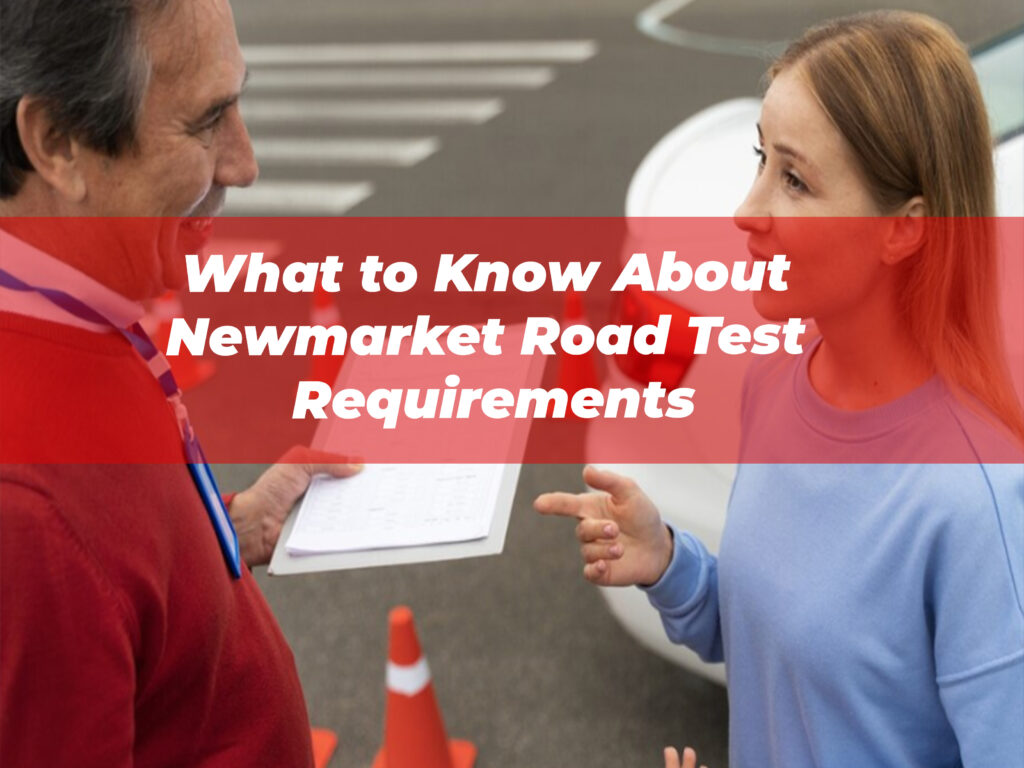Taking your Road Test Requirements is a major milestone on the path to earning your driver’s license. However, understanding the specific requirements of the Newmarket road test can make the experience much smoother and less intimidating. Whether you’re new to driving or just looking to ace the exam on your first try, being fully informed and prepared is the key to success.
This guide will walk you through everything you need to know about the Newmarket road test, from eligibility and preparation to what happens during the test itself and tips for avoiding common mistakes. With the right approach, you’ll feel confident and ready to hit the road.
1. Understanding the Road Test Requirements
The Newmarket road test is a standard examination designed to assess your driving skills, knowledge of traffic laws, and ability to handle real-world driving scenarios. The test typically includes elements such as navigating intersections, parallel parking, merging onto highways, and following right-of-way rules.
It’s important to note that the test adheres to Ontario’s graduated licensing system. Depending on your level, you’ll take one of two main tests:
- G2 Road Test: This is the first practical exam after receiving your G1. It Road Test Requirements your basic driving abilities in city and rural conditions.
- G Road Test: This is the second exam, taken to earn a full G license. It evaluates your ability to handle advanced scenarios like highway driving and emergency maneuvers.
Both tests are conducted by qualified examiners at official Road Test Requirements centres, including the one in Newmarket.

2. Eligibility Requirements for the Test
Before you book your road test, you must meet specific requirements. Here’s what you need to know:
2.1 G2 Road Test Eligibility
To qualify for the Road Test Requirements test, you must:
- Hold a G1 license for at least 12 months (or 8 months if you’ve completed an approved driver education course).
- Be at least 16 years old.
- Have proof of passing the knowledge test that earned you your G1.
2.2 G Road Test Eligibility
To take the G test:
- You must have held a G2 license for at least 12 months.
- You need to show competency in basic driving skills before advancing to highway and advanced road conditions.
2.3 Additional Requirements
For both tests:
- You must book an appointment online or through the Road Test Requirements centre.
- Have a valid vehicle available for the test that meets inspection standards (braking systems, horn, mirrors, etc.).
- Present a valid driver’s license and identification on test day.
3. Preparing for Success
The key to passing the Newmarket Road Test Requirements is preparation. Here are tried-and-true strategies to help you feel confident and ready:
3.1 Practice Driving
- Get Familiar With Test Routes: While the exact routes vary, practice on roads near the Newmarket Road Test Requirements, especially areas with roundabouts, intersections, and highways.
- Log Practice Hours: Spend as much time driving under different conditions as possible, including at night and in poor weather.
- Focus on Weak Areas: If you struggle with parallel parking or lane changes, dedicate extra practice time to mastering these skills.
3.2 Take a Driving Course
Enroll in a Ministry-approved driving school for professional instruction. They can teach you advanced techniques and help you better understand what examiners look for during the road test.
3.3 Review Ontario Traffic Laws
Know the rules of the road, including speed limits, right-of-way rules, and how to obey traffic signals and signs. These are vital for passing both the written and practical portions of the exam.
3.4 Prepare Your Vehicle
Ensure the vehicle you’ll use for the Road Test Requirements is in excellent condition:
- Test brakes, signals, and headlights before the exam day.
- Make sure the car is clean and free of distracting items inside.
- Have up-to-date insurance and registration documents.
4. What to Expect on Test Day
Knowing what happens during the road test can put your mind at ease. Here’s a detailed breakdown:
4.1 Before the Test
- Arrive Early: Show up at least 30 minutes before your scheduled exam to account for check-in and last-minute preparations.
- Vehicle Inspection: The examiner will perform a quick inspection of your car to ensure it’s roadworthy.
- Sign Paperwork: You’ll provide your driver’s Road Test Requirements and other necessary documents during check-in.
4.2 During the Test
The road test typically lasts 20 to 30 minutes and includes tasks such as:
- Starting, stopping, and parking (parallel parking is almost always included).
- Navigating intersections and figuring out right-of-way.
- Making proper lane changes and turns.
- Observing speed limits and traffic signs.
For the G test, additional highway driving tests may include:
- Merging onto and off a highway.
- Demonstrating proper following distance and lane discipline.
- Handling emergency stops on the shoulder if necessary.
4.3 The Examiner’s Role
The examiner is there to assess your Road Test Requirements, not to intimidate you. They will give clear instructions and take notes throughout the test. Focus on staying calm, following their guidance, and maintaining safe driving habits.
5. Common Mistakes to Avoid
Even small mistakes can affect your chances of passing. Here are some errors to watch out for:
5.1 Failing to Check Mirrors and Blind Spots
Not checking your mirrors or blind spots during lane changes or turns is a common reason for Road Test Requirements. Always double-check to ensure your surroundings are clear.
5.2 Rolling Stops
Stop signs mean a full stop—not slowing down and rolling through. Always come to a complete halt and look in all directions before proceeding.
5.3 Poor Lane Discipline
Swerving, drifting out of your lane, or hovering too close to other cars can cost you points. Be mindful and maintain your position.
5.4 Speeding or Driving Too Slowly
Stay within the speed limit but avoid driving too far below it unless conditions, like weather or traffic, call for it. Examiners look for confident, consistent speed management.
5.5 Missing Road Signs
Failing to abide by posted Road Test Requirements, like yield or no-turn signs, will hurt your score. Always scan for these and follow them correctly.
5.6 Nervous or Erratic Behavior
Your demeanor matters. If you make a mistake, stay calm. Panicking can lead to more errors.
6. What Happens After the Road Test
Once the test is over, the examiner will review your performance and provide feedback. Here’s what to expect:
6.1 If You Pass
Congratulations! You’ve earned your G2 or full G Road Test Requirements Road Test Requirements. The examiner will give you a temporary paper license until your new card arrives in the mail. Remember, with a G2, there are still restrictions, such as zero alcohol tolerance.
6.2 If You Don’t Pass
Don’t be discouraged if you don’t pass on your first try. The examiner will explain where you went wrong, giving you clear areas to improve on before your next attempt. You can rebook the test through the Drive Test website or by visiting a centre. Use this as a learning experience to do even better on your retake.
6.3 Retesting Policy
There is a mandatory waiting period before retaking the test:
- 10 days for a failed G2 road test.
- 10 days for a failed G road test.
Use this time wisely to practice and address any weak points highlighted by the examiner.
7. Final Thoughts on Passing the Newmarket Road Test
Passing the Newmarket road test isn’t just about memorizing rules or executing perfect parking maneuvers. It’s about building the confidence and skills to drive safely and responsibly on Ontario roads. With proper preparation, practice, and perseverance, you can successfully earn your driver’s license and move forward on the exciting road to independence.
Remember, preparation doesn’t stop after passing your Road Test Requirements. Driving is a lifelong skill that requires continuous learning and improvement. Commit to being a responsible driver who prioritizes safety at all times.










